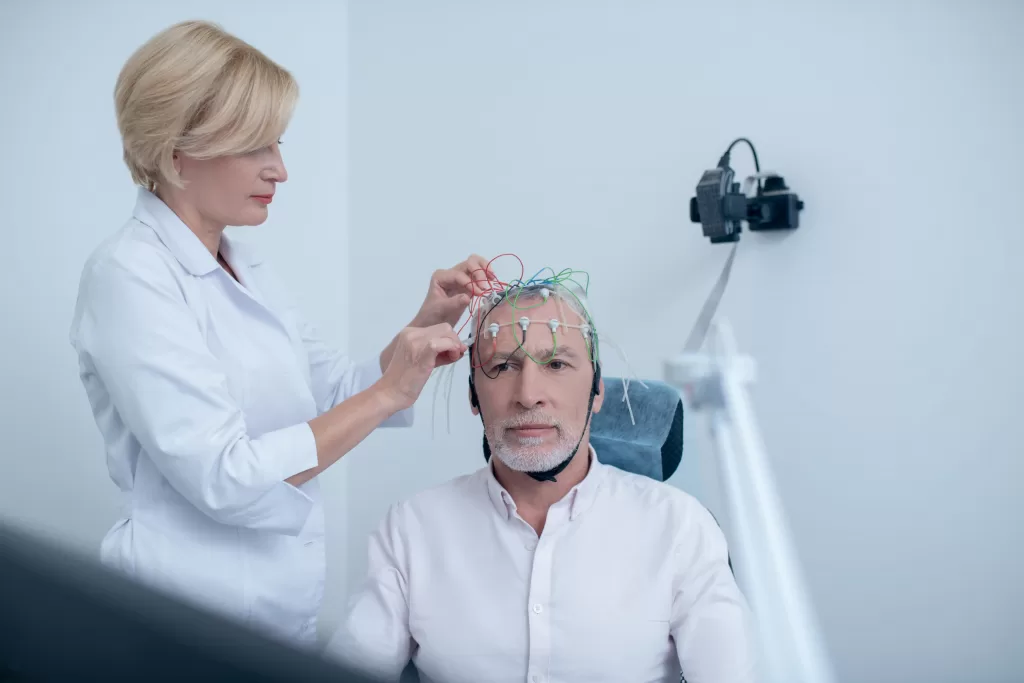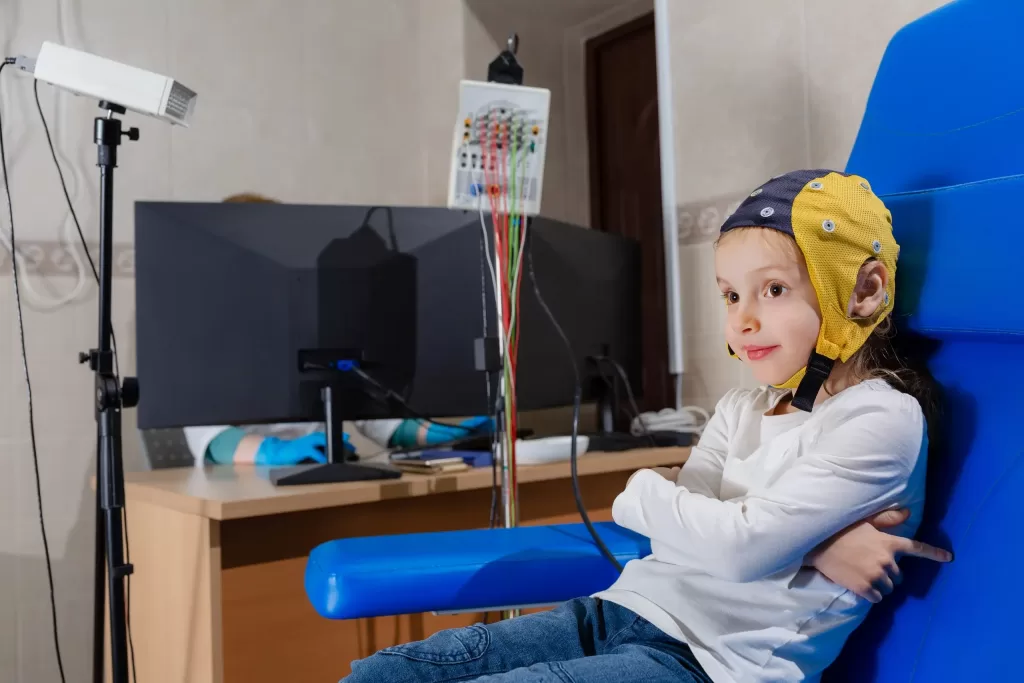Electroencephalogram (EEG test)
Medically Reviewed by Dr Aifric Boylan
Last updated on 31.07.2024
You may have heard of an investigation called an ECG before, which is a test for the electrical conduction of your heart. But did you know there is a similar test called Electroencephalogram (EEG) that is done to check the electrical waves in your brain?
In this article we’ll explain what an electroencephalogram is, also known as an EEG.
Brainwaves
Your body is in constant flux, with cells being created and destroyed every second. Part of the process involves electrical signals produced within your body that happen without any conscious work on your part. Within your skull, this process is called brainwaves and they can be picked up with an electroencephalogram.
Why check your brainwaves?
Certain medical conditions can affect your brainwaves. An EEG is usually performed in a hospital or a neurologist’s office and is commonly used to investigate brain issues such as:
- Epilepsy
- Stroke
- Physical brain injury
- Encephalitis or meningitis
- Migraine
- Sleep disorders
- Brain haemorrhage
- Brain tumour
- Dementia
An electroencephalogram can give information on the issue affecting the brain. It can also help prescribe any necessary treatment, such as antiepileptics.
For example, if you have had a seizure your doctor may organise an MRI scan of your brain to check for tumours or signs of infection. However, an MRI only looks at the structures of the brain and if they appear normal, then further investigation is necessary. In this scenario, the next investigation would be an EEG to check your brainwaves. This can pick up an abnormal pattern and help diagnose epilepsy.
How is an EEG done?
An EEG is a painless, simple procedure. Before you do it, your doctor will usually advise you to avoid any medications that can affect the brain, such as alcohol and caffeine. Depending on your hair style, you may need to remove hair extensions and avoid any gel or pomades.
Electrodes are placed on your scalp on specific points and attached with a temporary glue. There are no injections and nothing is inserted inside the skin of your scalp.
While measuring your brainwaves on a computer, the technician performing the EEG will usually ask you some questions. There will be periods where you rest and don’t interact with the technician. You will also be asked to look at flashing or strobing lights. This final part is done because flickering, bright lights can induce an abnormal pattern of brainwaves and can assist in diagnosing your underlying condition.
In premature babies who are cared for in an intensive care unit (NICU), a 24 hour EEG can be performed to check their brain health. An EEG can also be done on unconscious patients in the hospital to check for brain activity and diagnose whether there is brain death.
In more complex cases, a video EEG can also be done which records sound and visual data along with the brainwaves.
After the EEG
Once it is complete, the technician removes the electrodes from your scalp and you can clean your hair to remove the temporary glue. A neurologist reviews the results and you usually receive them within a week or so, depending on the service you use.
There is a small risk that an EEG causes a seizure, if you have epilepsy or are prone to them due to your condition.
The EEG results are used to compile data along with any blood tests or scans that have been done of your brain and help with your treatment plan.
Getting a Mental Health Care Plan in Australia: Your Guide
Getting a Mental Health Care Plan in Australia: Your Guide Mental health matters—and if you’re feeling overwhelmed, anxious, or down, a mental health care plan can help. But what is it, and how do [...]
UTI Symptoms and Treatment: What You Need to Know
UTI Symptoms and Treatment: What You Need to Know Urinary Tract Infections (UTIs) are common, uncomfortable, and often disruptive. But what exactly are the signs to watch for, and how can you get relief [...]
Free Mental Health Care Plan Online | Bulk-Billed by Qoctor
Free Mental Health Care Plan Online | Bulk-Billed by Qoctor Discover how to get a free, bulk-billed Mental Health Care Plan (MHCP) in Australia through Qoctor's telehealth service. Accessing [...]






